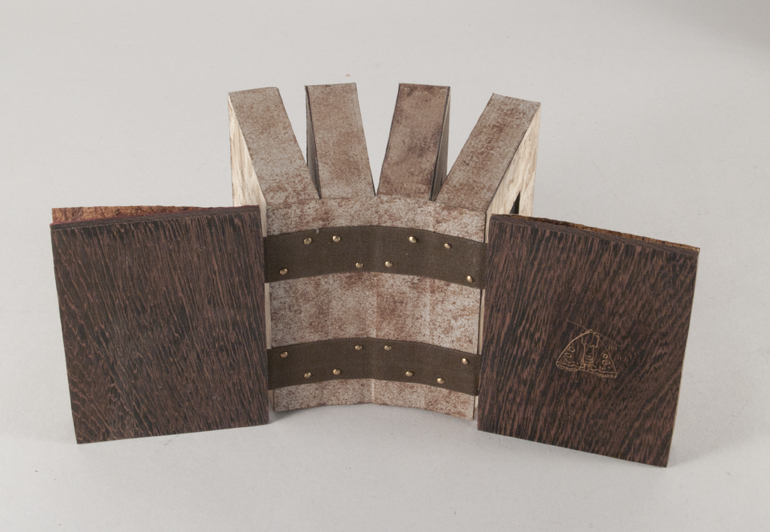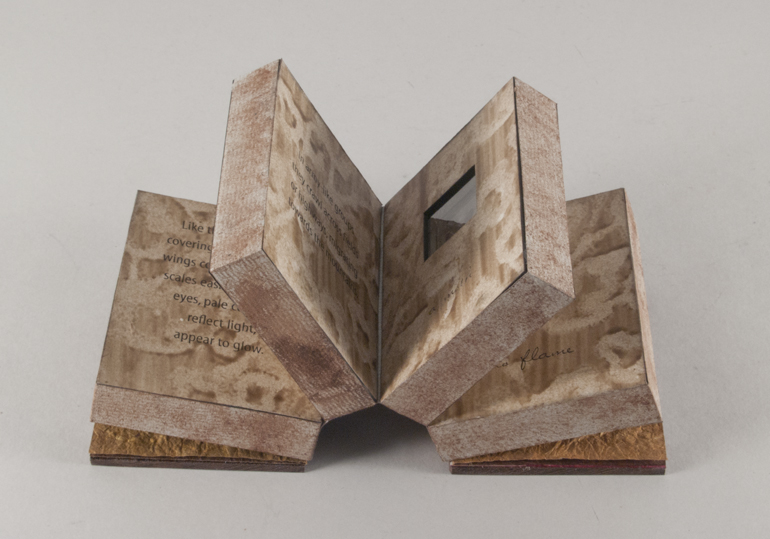Euxoa Auxiliaris
Details
- Materials:Book: wood, book board, laser cut and etched paste papers, museum board, laserprint, moths, epoxy casting resin, mica, buhgra papers with surface applied pigment, wenge, wax, book cloth, brass. Box: book board, shellac, pigment, wax, book cloth, magnifying lens
- Links to purchase and/or read reviews:
© 2012
size of edition: 12
Dimensions (in inches): 4.5 x 5 x 3.75 (box)
More
This book was begun during a summer when my studio was over run with those plain brown moths we always called Miller moths. One morning found a moth floating on the top of an open glue pot; that beautiful moth reminded me that even the peskiest of critters have their engaging moments. Inspired, I began to draw, then did a bit of research, then figured out ways to present moth snippets and specimens in book form. I wrote the text, recruited friends to gather specimens and designed the book and box. One of my favorite features is the detachable lid with magnifying lens built in, so one can roam around and examine other pesky critters more closely.
Like the dusty flour
covering a miller's garb, wings covered with fine scales easily displaced,
eyes, pale colored,
reflect light,
appear to glow.
In army-like groups they crawl across fields or highways, migrating towards the mountains.
Sleeping by day, they awake at dusk. Thinking all light is the moonlight they use to guide their nocturnal journeys
westward, artificial lights confuse their insect
response.
During this moist year, they have lingered here, flapping about in my cold coffee, or taking a fatal dip in an open glue pot.
Spiraling
to the source
a moth to
flame
The text behind the moth specimens reads:
Fear of Moths = Mottephobia
I’d rather jump out a window than be in a room full of moths.
Box text:
Up to 72% of the moths body weight is fat, making it one of the richest foods for predators such as the brown bear.
The army cutworm (Euxoa Auxiliaris) is a species of moth.
The fine scales on its wings rub off easily and look like the dusty flour found in a grain mill.
Its caterpillars are pests of oat (Avena saliva) and common wheat (Triticum aestivum).
Box lid:
Agrotini
Noctuidai
Lepideptera
Insecta
Tufts University, University of Denver, Colorado College, Baylor University, private collections



